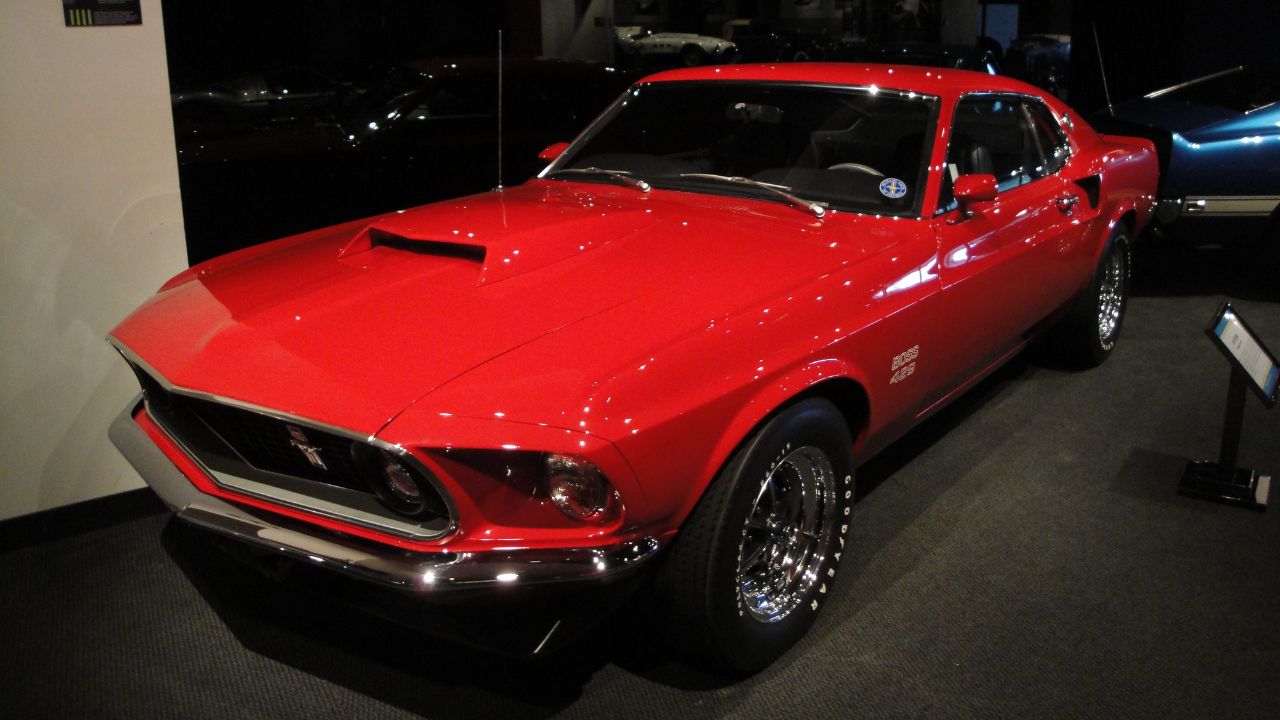Some cars arrive quietly and follow trends. Others show up early, set the pace, and change expectations before the rest of the industry catches on. This article focuses on muscle cars that did exactly that, as these models introduced performance, design, or technology that would only be fully appreciated years later.
These were vehicles that challenged norms, took risks, and offered drivers something ahead of what the market was ready to embrace. In a segment known for raw power and bold styling, these cars added forward-thinking execution that pointed to where the industry was heading.
Power That Arrived Before Its Time

This article was built around the idea that true innovation often goes unnoticed until time puts it in perspective. We selected muscle cars that introduced features, design elements, or performance benchmarks that were not fully understood or appreciated when they first launched. Each car on this list pushed boundaries in engineering, styling, or strategy that later became industry standards.
Our choices are based on documented advancements, influence on future models, and the lasting respect these vehicles now hold among collectors and enthusiasts. Looking back at them highlights how real progress in the automotive world often begins with the models that dared to lead rather than follow.
Pontiac GTO The Judge


As reported by MotorCities, the Judge brought a bold personality to the muscle car era, but beneath its bright paint and high-energy branding was a performance package that signaled where the industry was heading. It introduced clever marketing, youth-driven appeal, and factory-backed speed in one complete package. The Ram Air III and later IV engines delivered real capability while remaining street legal.
Its approach to integrating image, performance, and identity would later become a blueprint for countless models across brands. While many initially saw it as a flash in the pan, it had the hardware and vision to back it up. Today, the Judge is recognized not just for its character, but for its influence on how muscle cars were marketed and built.
Buick GSX Stage 1


According to the Audrain Auto Museum, the GSX Stage 1 surprised many by delivering luxury-level comfort with power figures that rivaled those of bare-boned street machines. It had a massive, torquey engine, which was combined with plenty of luxury options, challenging the notion that muscle cars had to be stripped down to go fast. The GSX proved that refinement and raw power could share the same badge.
With its impressive quarter-mile times and advanced tuning, it blurred the lines between grand touring and straight-line speed. Its forward-thinking combination of performance and polish anticipated the rise of modern performance sedans. Buick took a different route, and it paid off with a car that feels more relevant today than ever.
Plymouth Road Runner Superbird


The Superbird stood out instantly with its enormous rear wing and aerodynamic nosecone, but its engineering roots went much deeper. As reported by Hagerty, it was developed for NASCAR and brought race-proven aerodynamics to the street years before terms like “downforce” became part of the consumer vocabulary. It challenged what muscle cars could look like and how they could perform at high speeds.
The car’s wind-cheating design had a direct influence on future performance models, both on and off the racetrack. At the time, many buyers found it too extreme; however, today it is admired for being ahead of its time in terms of design. It remains a symbol of what happens when racing technology meets production vision.
AMC AMX


As Robert Ross at Robb Report points out, the AMC AMX came with a shorter wheelbase, a focus on balance, and a desire to compete with more than just muscle car rivals. It offered handling dynamics that often went overlooked in an era obsessed with straight-line performance. AMC delivered a car that was lighter, tighter, and aimed at the driving enthusiast. The two-seat configuration and compact size made it stand out in a field of larger coupes.
Its approach predicted a growing demand for performance cars with more refined handling. The AMX showed that American muscle could be nimble and sharp long before that became a wider trend.
Ford Mustang Boss 429


According to Classic.com, the Boss 429 was more than a high-performance Mustang; it was a street-legal testbed for Ford’s racing ambitions. Built to homologate a NASCAR engine, it featured advanced engineering that few road cars could match at the time. The semi-hemispherical heads, oversized intake ports, and reinforced chassis turned it into a rolling piece of technology.
Even though it was underappreciated during its original run, it introduced ideas that would appear in racing and high-performance tuning for years. Its rarity and complexity gave it long-lasting collector appeal. The Boss 429 helped bridge the gap between road and race in a way that was not widely understood in its day.
Chevrolet Chevelle SS 454 LS6


Hot Rod magazine informs us that the LS6-powered Chevelle pushed the boundaries of what a factory muscle car could offer in terms of raw horsepower. It featured performance parts that rivaled aftermarket builds, packed into a platform that still retained daily usability. Its horsepower rating was conservative, hiding the true potential of what was under the hood. Few cars matched its capability right off the showroom floor.
The combination of aggressive acceleration and respectable build quality made it feel more complete than many of its peers. The LS6 set a benchmark that other manufacturers would later chase, even as muscle cars faced tightening regulations.
Dodge Charger Daytona


As MotorTrend points out, the Charger Daytona, like its Plymouth cousin, was born out of NASCAR necessity. It introduced functional aerodynamics into a market dominated by style-first thinking. The car was built for stability at high speeds, not just visual impact. Its engineering reflected a deeper understanding of airflow and track performance that would later become standard thinking in performance car development.
It faced resistance from consumers at the time due to its radical appearance, and dealerships struggled to sell them. Today, the Charger Daytona’s value and influence are clear indicators of how far ahead Dodge was thinking.
Oldsmobile Toronado GT


According to Car & Driver, the Toronado GT combined muscle car attitude with a groundbreaking front-wheel-drive layout, a configuration unheard of in high-performance American cars at the time. This drivetrain layout gave it unique traction advantages and more interior space, hinting at future design priorities. The powerful V8 and aggressive styling aligned it with the muscle segment, even as its architecture said otherwise.
It opened the door to more diverse approaches in how power could be delivered to the pavement. The Toronado GT may not have followed the conventional mold, but it helped stretch the definition of what a muscle car could be. It laid a path for future innovation in layout and packaging.
Pontiac Firebird Trans Am SD-455


As Rob Finkelman at Street Muscle Magazine points out, Pontiac introduced the SD-455 variant of the Trans Am just as the muscle car era was winding down, but it carried technology that pointed towards the future. With strengthened internals, revised heads, and emissions-conscious tuning, it managed to meet stricter regulations without losing its performance core. Pontiac showed that muscle could survive if approached with smarter engineering.
This car became a bridge between the brute force of the late sixties and the more regulated, refined performance of the years ahead. It was one of the first to show that adaptation was possible without sacrificing identity. The SD-455 became an understated pioneer in the evolution of performance.
The Dodge Charger R/T

 Image Credit: Gestalt Imagery / Shutterstock.
Image Credit: Gestalt Imagery / Shutterstock.
AutoEvolution says the Dodge Charger R/T embodied the spirit of American performance wrapped in a sleek, fastback design. It commanded attention with hidden headlights, a wide stance, and a muscular silhouette that hinted at the power within. Under the hood, high-output V8 engines like the 440 Magnum and the legendary 426 HEMI made it a dominant force on the road. Inside, the Charger offered a surprisingly refined experience with premium materials, contoured seats, and a driver-focused cockpit.
It bridged the gap between brute strength and upscale styling, appealing to those who wanted more than just raw horsepower. The Charger R/T left a lasting impression as a bold and balanced take on the muscle car formula.
Plymouth GTX 440 Six Barrel


As per Dodge Garage, the GTX combined muscle car aggression with more refined features, aiming to offer a mature alternative without losing intensity. Its Six Barrel carb setup and tuned suspension gave it the hardware to compete with rawer street machines.
Inside, it brought comfort and finish not usually found in high-output cars. Plymouth offered a vision of what muscle cars could look like if they matured without losing their edge. The GTX hinted at what would eventually become the performance-luxury segment. It was a model that spoke to power with polish before that became a trend.
Chevrolet Camaro Z/28 (first-gen)


Robb Report informs us that the original Z/28 was built for road racing rather than stoplight drag races, an unusual focus in the muscle car landscape of the time. Its high-revving small-block engine, close-ratio gearbox, and upgraded suspension set it apart as a driver’s machine.
The Camaro’s engineering leaned toward balance and feedback rather than brute force. It showed that performance could mean more than acceleration. As track-focused performance grew in popularity, the Z/28’s early approach proved prophetic. It remains one of the most respected builds in the Camaro’s long history.
Ford Torino


Ford Torino delivered serious power in a larger, more understated shell. As How Stuff Works points out, it was fast, but also stable and capable in a way that many of its size category rivals were not. Ford aimed to combine speed with poise, anticipating future interest in grand touring muscle platforms. The car could hustle down the strip while still offering a smoother ride and more refined presence.
Its performance figures were strong, but its long-term impact came from how complete it felt. The Torino Cobra Jet helped lay the groundwork for a broader definition of performance.
AMC Rebel Machine


The Rebel Machine packed huge performance into a platform that, according to Street Muscle Mag, many enthusiasts overlooked, delivering one of AMC’s most focused muscle car efforts. With bold graphics, a tuned suspension, and real power under the hood, it surprised critics and rivals alike. AMC built it to make a statement, and it did exactly that without relying on brand legacy.
It anticipated the value of identity in a crowded field, using design and performance to carve out space. Although short-lived, it introduced ideas that endured in enthusiast circles. The Rebel Machine demonstrated that innovation can sometimes emerge from unexpected places.
Pontiac Can Am


According to AutoEvolution, the Can Am was Pontiac’s attempt to blend full-size comfort with muscle car energy during a time when that balance was becoming harder to achieve. Borrowing performance elements from the Trans Am and applying them to a larger coupe gave it a distinct flavor. Its aggressive styling and powertrain setup made it a standout even in a fading era.
The Can Am predicted the future demand for cars that could deliver both space and strength. Despite limited production, it gained a reputation for being one of Pontiac’s more daring efforts. It showed that muscle could evolve, even in its final years.
When Power Paved the Way


These muscle cars introduced ideas and performance that set them apart from everything else on the road. They brought new thinking to design, engineering, and what drivers could expect from a high-powered vehicle. Some arrived before the market was ready, others quietly influenced everything that came after.
Their value today goes beyond rarity or nostalgia. These cars helped shape the standards that later generations would follow. Recognizing their place in history reminds us of the importance of early vision in driving change.








